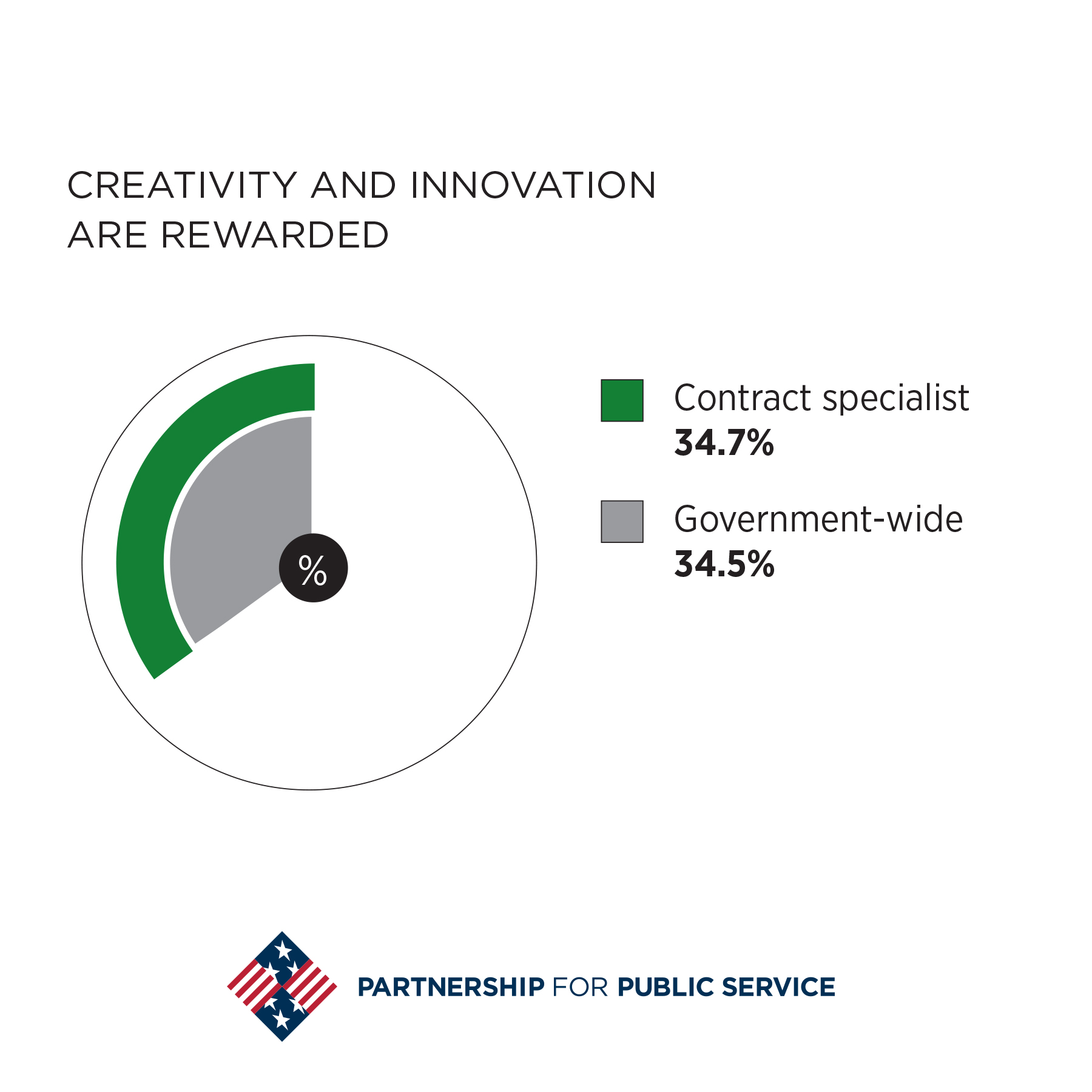Risk-Intolerant Acquisition Processes Are Hurting Innovation
A new study shows there are steps agency leaders can take.
Innovation in government is not only possible, it has led to breakthrough inventions—from GPS and the Internet to Velcro.
Such innovation requires agencies and their partners outside of government to take and share strategic risks. In fact, federal organizations that are in the business of innovation, like the Defense Advanced Research Projects Agency, the national labs and the Pentagon’s research and development complex, regularly involve the private sector and grantees, and succeed by encouraging risk-taking.
In a new report, “Innovation is a Contract Sport,” by the Partnership for Public Service and Booz Allen Hamilton, we highlight the factors in the acquisition process that encourage innovative ideas to take hold in government. This includes ways to share information, collaborate and most of all, to try new and creative approaches that sometimes do not succeed.
We know that this risk-taking does not come easy.
During a recent forum on innovation in government, a number of current and former federal executives cited complex, narrowly interpreted acquisition rules as creating zero tolerance for risk, and they all agreed that without risk, there can be no innovation.
According to the 2015 Federal Employee Viewpoint Survey, federal acquisition professionals feel part of the problem also lies with an agency culture that does not encourage innovative approaches. The survey found that only one-third of the 8,000 contract specialists believe creativity and innovation are rewarded at their agencies.

Government employees, industry, grantees and the academic community are part of the process and all have a stake. Theirs is not the arms-length relationship that some believe is required by the acquisition process; rather, it’s a strategic partnership that does not sacrifice competition, transparency or accountability.
What does this look like in practice?
The Air Force’s Office of Transformational Innovation offers a case in point. The office’s mission is to help the Air Force acquire innovative weapons systems “better, faster and cheaper,” and it does so by improving internal acquisition processes; facilitating information-sharing with industry throughout the acquisition lifecycle; expanding competition among traditional and non-traditional defense contractors; and by ensuring that innovation is rewarded—not discouraged—in those competitions.
The office employs a “fail fast” strategy, encouraging unconventional thinking and giving each project six months to make the case that it has the potential to improve Air Force operations significantly. It even posts failed ideas prominently on its website under a huge red button labeled “not easy”—not to embarrass, but to learn. In other words, failures are not necessarily wasted opportunities, but can provide important lessons and be stepping stones to progress.
Our report offers many other examples of agencies that have mastered the art of acquiring innovation, which can be replicated across government, not just in those agencies that have innovation as their mission. Working collaboratively with partners, these agencies take and share risks to achieve breakthroughs without sacrificing safeguards and they have exit strategies when innovations do not pan out.
Bottom line: Innovation has become a contract sport, and those agencies that successfully and legally collaborate with their private sector and nonprofit partners—and establish the mindset that risk-taking and “smart failure” are necessary elements of learning and progress—will be able to harness their innovative energies.
Mallory Barg Bulman is the director of research and evaluation at the nonprofit, nonpartisan Partnership for Public Service. Ronald Sanders is a vice president at Booz Allen Hamilton and is the firm’s first Booz Allen Hamilton fellow.
(Image via Lightspring/Shutterstock.com)



